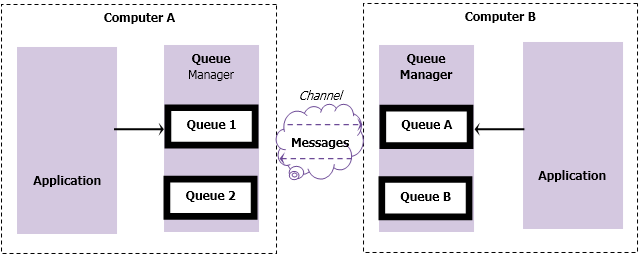Introduction
The IBM WebSphere MQ server enables messages to be exchanged, either synchronously or asynchronously, between application programs running on one or more target systems. The three most critical components of the server are:
- The queue manager
- The message queue
- The channel
A queue manager is a program that provides messaging services to applications. The queue manager ensures that messages are sent to the correct queue or are routed to another queue manager. The queue manager processes both the MQI calls that are issued to it, and the commands that are submitted to it (from whatever source). The queue manager generates the appropriate completion codes for each call or command.
A queue is a container for messages. Messages can be retrieved from, or added to, the queue, one at a time, by applications that are connected to the queue manager that owns the queue.
Channels are of two types. A message channel is a unidirectional communications link between two queue managers that is used to transfer messages between them. An MQI channel is bi-directional and connects an application (MQI client) to a queue manager on a server machine for the transfer of MQI calls and responses.
Figure 1 depicts the architecture of a WebSphere MQ server:

Figure 1 : Architecture of an IBM MQ server
Disruption in the communication between two components in a WebSphere MQ infrastructure could be caused by the non-availability of the WebSphereMQ server, difficulties in connecting to the queue manager, or due to the queue manager’s inability to process data quickly. For communication to resume, administrators should first figure out where the real problem lies. This can be achieved only if the WebSphereMQ server’s components are continuously monitored, and potential communication problems accurately detected. eG Enterprise helps administrators to achieve this.
